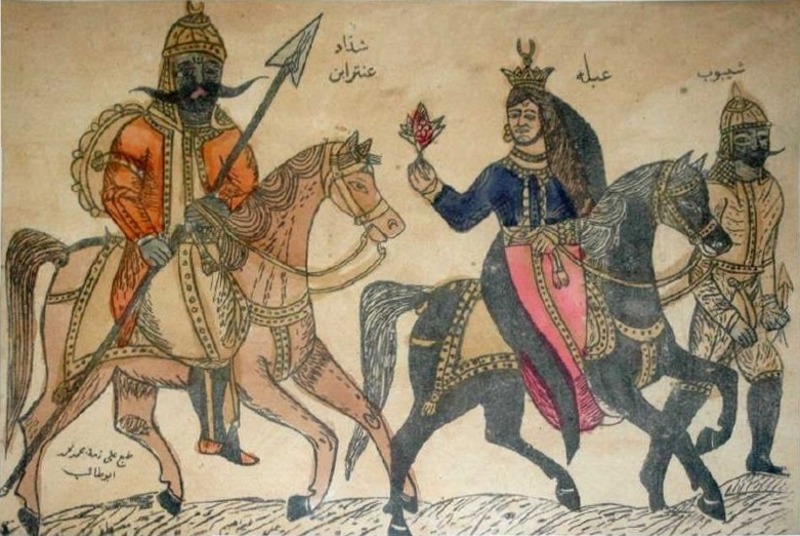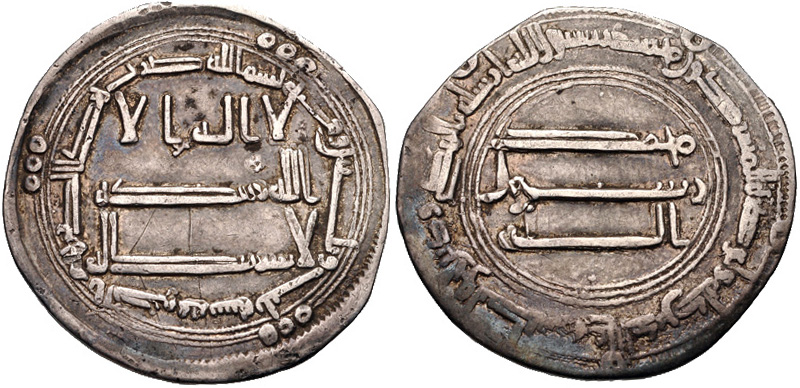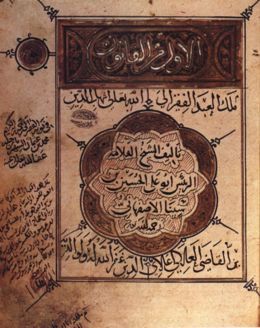|
Vāmiq U 'Adhrā
''Metiochus and Parthenope'' ( el, Μητίοχος καὶ Παρθενόπη, ''Mētiokhos kai Parthenopē'') is an Ancient Greek novel that, in a translation by the eleventh-century poet ‘Unṣurī, also became the Persian romance epic ''Vāmiq u ‘Adhrā'', and the basis for a wide range of stories about the 'lover and the virgin' in medieval and modern Islamicate cultures. Greek text ''Metiochus and Parthenope'' is similar in style to Chariton's ''Chaereas and Callirhoe'', from the first century BC or AD, and so is presumed to be equally old, making it one of the first prose novels in the Western literary tradition. The text survives only in small fragments of papyrus from Egypt, but references in Greek literature of the Roman period, a Syrian mosaic of c. 200 depicting the protagonists, and another from Zeugma, Commagene, shows the story's continued importance during the Roman period. Drawing on surviving sources, Hägg and Utan reconstruct the following plot. The sto ... [...More Info...] [...Related Items...] OR: [Wikipedia] [Google] [Baidu] |
Mosaic Of Metiochus And Parthen - 2-3 Century - Zeugma Mosaic Museum - Gaziantep - Turkey (5771953059)
A mosaic is a pattern or image made of small regular or irregular pieces of colored stone, glass or ceramic, held in place by plaster/mortar, and covering a surface. Mosaics are often used as floor and wall decoration, and were particularly popular in the Ancient Roman world. Mosaic today includes not just murals and pavements, but also artwork, hobby crafts, and industrial and construction forms. Mosaics have a long history, starting in Mesopotamia in the 3rd millennium BC. Pebble mosaics were made in Tiryns in Mycenean Greece; mosaics with patterns and pictures became widespread in classical times, both in Ancient Greece and Ancient Rome. Early Christian basilicas from the 4th century onwards were decorated with wall and ceiling mosaics. Mosaic art flourished in the Byzantine Empire from the 6th to the 15th centuries; that tradition was adopted by the Norman Kingdom of Sicily in the 12th century, by the eastern-influenced Republic of Venice, and among the Rus. Mosai ... [...More Info...] [...Related Items...] OR: [Wikipedia] [Google] [Baidu] |
Anno Hegirae
The Hijri year ( ar, سَنة هِجْريّة) or era ( ''at-taqwīm al-hijrī'') is the era used in the Islamic lunar calendar. It begins its count from the Islamic New Year in which Muhammad and his followers migrated from Mecca to Yathrib (now Medina). This event, known as the Hijrah, is commemorated in Islam for its role in the founding of the first Muslim community (''ummah''). In the West, this era is most commonly denoted as AH ( la, Anno Hegirae , 'in the year of the Hijra') in parallel with the Christian (AD), Common (CE) and Jewish eras (AM) and can similarly be placed before or after the date. In predominantly Muslim countries, it is also commonly abbreviated H ("Hijra") from its Arabic abbreviation '' hāʾ'' (). Years prior to AH 1 are reckoned in English as BH ("Before the Hijrah"), which should follow the date. A year in the Islamic lunar calendar consists of twelve lunar months and has only 354 or 355 days in its year. Consequently its New Year's Day occurs ... [...More Info...] [...Related Items...] OR: [Wikipedia] [Google] [Baidu] |
Medieval Legends
In the history of Europe, the Middle Ages or medieval period lasted approximately from the late 5th to the late 15th centuries, similar to the post-classical period of global history. It began with the fall of the Western Roman Empire and transitioned into the Renaissance and the Age of Discovery. The Middle Ages is the middle period of the three traditional divisions of Western history: classical antiquity, the medieval period, and the modern period. The medieval period is itself subdivided into the Early, High, and Late Middle Ages. Population decline, counterurbanisation, the collapse of centralized authority, invasions, and mass migrations of tribes, which had begun in late antiquity, continued into the Early Middle Ages. The large-scale movements of the Migration Period, including various Germanic peoples, formed new kingdoms in what remained of the Western Roman Empire. In the 7th century, North Africa and the Middle East—most recently part of the Eastern Roman ... [...More Info...] [...Related Items...] OR: [Wikipedia] [Google] [Baidu] |
Arab Culture
Arab culture is the culture of the Arabs, from the Atlantic Ocean in the west to the Arabian Sea in the east, and from the Mediterranean Sea in the north to the Horn of Africa and the Indian Ocean in the southeast. The various religions the Arabs have adopted throughout their history and the various empires and kingdoms that have ruled and took lead of the Arabian civilization have contributed to the ethnogenesis and formation of modern Arab culture.Language, literature, gastronomy, art, architecture, music, spirituality, philosophy and mysticism are all part of the cultural heritage of the Arabs. The Arab world is sometimes divided into separate regions depending on different cultures, dialects and traditions including: • The Levant: Lebanon, Syria, Palestine and Jordan. • Egypt • Mesopotamia (Iraq). • The Arabian Peninsula: Kuwait, Bahrain, Qatar, Saudi Arabia, Oman, Yemen and the United Arab Emirates. • Sudan • The Maghreb: Libya, Tunisia, Algeria, Morocco ... [...More Info...] [...Related Items...] OR: [Wikipedia] [Google] [Baidu] |
Persian Poems
Persian may refer to: * People and things from Iran, historically called ''Persia'' in the English language ** Persians, the majority ethnic group in Iran, not to be conflated with the Iranic peoples ** Persian language, an Iranian language of the Indo-European family, native language of ethnic Persians *** Persian alphabet, a writing system based on the Perso-Arabic script * People and things from the historical Persian Empire Other uses * Persian (patience), a card game * Persian (roll), a pastry native to Thunder Bay, Ontario * Persian (wine) * Persian, Indonesia, on the island of Java * Persian cat, a long-haired breed of cat characterized by its round face and shortened muzzle * The Persian, a character from Gaston Leroux's ''The Phantom of the Opera'' * Persian, a generation I Pokémon species * Alpha Indi, star also known as "The Persian" See also * Persian Empire (other) * Persian expedition (other) or Persian campaign * Persian Gulf (other) ... [...More Info...] [...Related Items...] OR: [Wikipedia] [Google] [Baidu] |
Ancient Greek Novels
Five ancient Greek novels survive complete from antiquity: Chariton's ''Callirhoe'' (mid 1st century), Achilles Tatius' ''Leucippe and Clitophon'' (early 2nd century), Longus' ''Daphnis and Chloe'' (2nd century), Xenophon of Ephesus' ''Ephesian Tale'' (late 2nd century), and Heliodorus of Emesa's ''Aethiopica'' (3rd century). There are also numerous fragments preserved on papyrus or in quotations, and summaries in '' Bibliotheca'' by Photius, a 9th-century Ecumenical Patriarch. The titles of over twenty such ancient Greek romance novels are known, but most of them have only survived in an incomplete, fragmentary form. The unattributed ''Metiochus and Parthenope'' may be preserved by what appears to be a faithful Persian translation by the poet Unsuri. The Greek novel as a genre began in the first century CE, and flourished in the first four centuries; it is thus a product of the Roman Empire. The exact relationship between the Greek novel and the Latin novels of Petronius and Apulei ... [...More Info...] [...Related Items...] OR: [Wikipedia] [Google] [Baidu] |
New Persian
New Persian ( fa, فارسی نو), also known as Modern Persian () and Dari (), is the current stage of the Persian language spoken since the 8th to 9th centuries until now in Greater Iran and surroundings. It is conventionally divided into three stages: Early New Persian (8th/9th centuries), Classical Persian (10th–18th centuries), and Contemporary Persian (19th century to present). Dari is a name given to the New Persian language since the 10th century, widely used in Arabic (compare Al-Estakhri, Al-Muqaddasi and Ibn Hawqal) and Persian texts. Since 1964, it has been the official name in Afghanistan for the Persian spoken there. Classification New Persian is a member of the Western Iranian group of the Iranian languages, which make up a branch of the Indo-European languages in their Indo-Iranian subdivision. The Western Iranian languages themselves are divided into two subgroups: Southwestern Iranian languages, of which Persian is the most widely spoken, and Northweste ... [...More Info...] [...Related Items...] OR: [Wikipedia] [Google] [Baidu] |
Al-Biruni
Abu Rayhan Muhammad ibn Ahmad al-Biruni (973 – after 1050) commonly known as al-Biruni, was a Khwarazmian Iranian in scholar and polymath during the Islamic Golden Age. He has been called variously the "founder of Indology", "Father of Comparative Religion", "Father of modern geodesy", and the first anthropologist. Al-Biruni was well versed in physics, mathematics, astronomy, and natural sciences, and also distinguished himself as a historian, chronologist, and linguist. He studied almost all the sciences of his day and was rewarded abundantly for his tireless research in many fields of knowledge. Royalty and other powerful elements in society funded Al-Biruni's research and sought him out with specific projects in mind. Influential in his own right, Al-Biruni was himself influenced by the scholars of other nations, such as the Greeks, from whom he took inspiration when he turned to the study of philosophy. A gifted linguist, he was conversant in Khwarezmian, Persian, Ar ... [...More Info...] [...Related Items...] OR: [Wikipedia] [Google] [Baidu] |
Al-Ma'mun
Abu al-Abbas Abdallah ibn Harun al-Rashid ( ar, أبو العباس عبد الله بن هارون الرشيد, Abū al-ʿAbbās ʿAbd Allāh ibn Hārūn ar-Rashīd; 14 September 786 – 9 August 833), better known by his regnal name Al-Ma'mun ( ar, المأمون, al-Maʾmūn), was the seventh Abbasid caliph, who reigned from 813 until his death in 833. He succeeded his half-brother al-Amin after a civil war, during which the cohesion of the Abbasid Caliphate was weakened by rebellions and the rise of local strongmen; much of his domestic reign was consumed in pacification campaigns. Well educated and with a considerable interest in scholarship, al-Ma'mun promoted the Translation Movement, the flowering of learning and the sciences in Baghdad, and the publishing of al-Khwarizmi's book now known as "Algebra". He is also known for supporting the doctrine of Mu'tazilism and for imprisoning Imam Ahmad ibn Hanbal, the rise of religious persecution ('' mihna''), and for the resum ... [...More Info...] [...Related Items...] OR: [Wikipedia] [Google] [Baidu] |
Sahl B
Sahl may refer to: *Arabic ''sahl'' سهل "easy", given name: ** Sahl ibn Bishr, Persian translator and astrologer ** Ibn Sahl (other) ** Abū Sahl al-Qūhī, Persian mathematician, physicist and astronomer ** Sahl Smbatean, medieval Armenian prince *Jewish given name סהל ** Sahl ben Matzliah Sahl ben Matzliah ( he, סהל בן מצליח הכהן, ''Sahl Ben Matzliah HaCohen'') (910–990), also known as Abu al-Sari was a Karaite philosopher and writer. Born in Jerusalem, he belonged to the Rechabites, and was one of the apostles of ... (d. 990), Karaite hakam *Jewish surname ** Hans Sahl (1902–1993), German literature-, film- and theatre-critic ** Jan Sahl (born 1950), Norwegian politician ** Mort Sahl (1927–2021), American comedian and actor {{disambiguation, given name, surname ... [...More Info...] [...Related Items...] OR: [Wikipedia] [Google] [Baidu] |
Ibn Al-Nadim
Abū al-Faraj Muḥammad ibn Isḥāq al-Nadīm ( ar, ابو الفرج محمد بن إسحاق النديم), also ibn Abī Ya'qūb Isḥāq ibn Muḥammad ibn Isḥāq al-Warrāq, and commonly known by the ''nasab'' (patronymic) Ibn al-Nadīm ( ar, ابن النديم; died 17 September 995 or 998) was an Arab Muslim bibliographer and biographer of Baghdad who compiled the encyclopedia ''Kitāb al-Fihrist'' (''The Book Catalogue''). Biography Much known of al-Nadim is deduced from his epithets. 'Al-Nadim' (), 'the Court Companion' and 'al-Warrāq () 'the copyist of manuscripts'. Probably born in Baghdad ca. 320/932 he died there on Wednesday, 20th of Shaʿban A.H. 385. He was a Persian or perhaps an Arab. From age six, he may have attended a ''madrasa'' and received comprehensive education in Islamic studies, history, geography, comparative religion, the sciences, grammar, rhetoric and Qurʾanic commentary. Ibrahim al-Abyari, author of ''Turāth al-Insaniyah'' says al-Nadim s ... [...More Info...] [...Related Items...] OR: [Wikipedia] [Google] [Baidu] |
Herat
Herāt (; Persian: ) is an oasis city and the third-largest city of Afghanistan. In 2020, it had an estimated population of 574,276, and serves as the capital of Herat Province, situated south of the Paropamisus Mountains (''Selseleh-ye Safēd Kōh'') in the fertile valley of the Hari River in the western part of the country. An ancient civilization on the Silk Road between the Middle East, Central and South Asia, it serves as a regional hub in the country's west. Herat dates back to Avestan times and was traditionally known for its wine. The city has a number of historic sites, including the Herat Citadel and the Musalla Complex. During the Middle Ages Herat became one of the important cities of Khorasan, as it was known as the ''Pearl of Khorasan''. After the conquest of Tamerlane, the city became an important center of intellectual and artistic life in the Islamic world. Under the rule of Shah Rukh the city served as the focal point of the Timurid Renaissance, whose glor ... [...More Info...] [...Related Items...] OR: [Wikipedia] [Google] [Baidu] |






